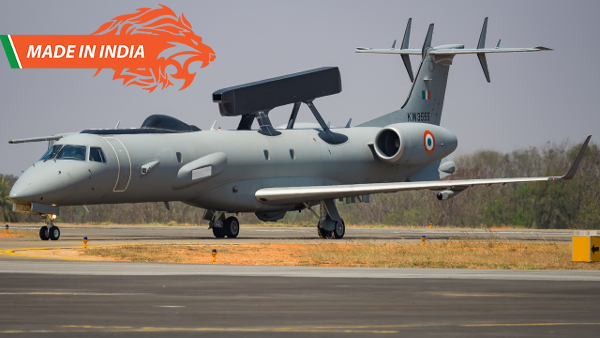NEW DELHI: The government has given the final nod to the mega Rs 10,990 crore indigenous project to build six AEW&C (airborne early-warning and control) aircraft, which are critical in modern warfare as powerful “eyes in the sky”, to bolster the IAF’s surveillance capability along the borders with China and Pakistan.
Sources said the DRDO project, which will entail mounting indigenous 360-degree coverage AESA (active electronically scanned array) radars on six Airbus-321 passenger aircraft to be acquired from the existing Air India fleet, was approved by the Cabinet Committee on Security (CCS) on Wednesday.
Chaired by PM Narendra Modi, the CCS had also cleared the long-pending Airbus-Tata project to build 56 C-295 medium transport aircraft at a cost of over Rs 21,000 crore (around $3 billion), as was reported by TOI.
The AEW&C project, which was accorded the initial “acceptance of necessity” by the defence ministry in December last year, is especially crucial because both Pakistan and China are far ahead of India in this arena.
Under the project, the first flight trial of the AEW&C aircraft is now expected to take place in four years, with the entire project being completed in seven years.
IAF currently has just three Israeli Phalcon AWACS mounted on Russian IL-76 transport aircraft, with 360-degree radar coverage at a 400-km range. It also has two indigenous “Netra” AEW&C aircraft, with indigenous 240-degree coverage radars with a 250-km range, fitted on smaller Brazilian Embraer-145 jets.
“The new AEW&C aircraft will be a major upgrade on the Netra in terms of 360-degree coverage and longer range. The narrow-body A-321 planes will be bought from Air India at a much cheaper rate and then modified with the help of Airbus to fit the indigenous radars and other equipment. Their entire maintenance and service will be in India,” said a source.
AEW&C or AWACS aircraft can detect incoming fighters, cruise missiles and drones much before ground-based radars, direct friendly fighters during air combat with enemy jets, and keep tabs on enemy troop build-ups and warships.
As was reported by TOI earlier, the IAF felt the operational necessity for more such aircraft during the aerial skirmish with Pakistani fighters in February 2019 after the cross-border Balakot air-strikes. The continuing military confrontation with China in eastern Ladakh has further accentuated the need.
You may also like
-
IAF Aircraft Set Course For Exercise Eastern Bridge VII At Oman
-
IAF Set To Host The Indian Defence Aviation Exposition-II At Jodhpur
-
Defence Secretary to co-chair 5th India-Philippines Joint Defence Cooperation Committee meeting in Manila
-
Simultaneous Launch Of ‘malpe And Mulki’, Fourth And Fifth Ships Of Asw Swc (Csl) Project
-
Aatmanirbharta in Defence: MoD signs Contract with HAL for 240 AL-31FP Aero Engines for Su-30MKI Aircraft
